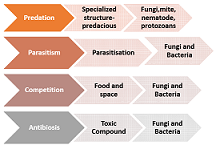
Agriculture, Food and Your Options
The transformation of the agri-food industry has been and continues to be reflected in the rapid progress of structural development over the last two decades. The market has been deliberately increased and the EU’s Common Agricultural Policy has increasingly strengthened its rural, climate, environmental and trade priorities. In particular, there are climate and energy policy measures both introduced and expected to be strengthened in the 2020s. You will be getting the support of the CAB Abstracts articles here.
Farm Size Increase
At the same time, increasing farm size and new production technology for primary production have set the stage for new skills requirements for entrepreneurs. There is also a change in consumer habits and values and awareness of resource scarcity have created their own needs for change in primary production. Alternative food systems such as the production of artificial meat and insect food are constantly evolving and challenge traditional agriculture, in particular, to better manage its environmental impact.
This publication presents alternative scenarios for the future of the agri-food sector up to 2030 and anticipates the policy priorities in each scenario have a leading role. The work was carried out in three parts. First, the transformational forces mapped in the literature review were presented in the commonly used PESTEV breakdown, which covers Political, Economic, Social, Technological, Ecological, and Values changes.

The Second Matter
Second, based on these forces of change, four alternative scenario shots were produced, highlighting threats and opportunities related to the operating environment. Third, it was evaluated qualitatively with the help of a future table, how these scenarios, if they materialize, will affect the agri-food economy in Finland.
In particular, the possible impacts of climate change mitigation actions were deepened agriculture, the effects of global market change, the stronger and more visible introduction of northern competition factors, and the effects of energy change on agriculture. The main the agricultural dimension was, firstly, how the ratio of public control was compared market guidance will evolve over the next 10 years, on the one hand, whether they strangle livelihoods such as climate action or provide opportunities for new growth.
The other factors to think about
Secondly, as far as agriculture is concerned, development is strongly influenced by the way agriculture is competitiveness is developing and changing vis-à-vis other Member States of the European Union and globally. Growth in the agri-food sector can be seen as a sign of competitiveness, so it is also affected by the development of the competitiveness of other parts of the chain. The loss of competitiveness will again reduce agriculture.
The time span of the scenarios extends to 2030. The scenarios are called
- Agriculture
- Energy change in agriculture, highlighting the opportunities of climate and energy change,
- Agriculture under pressure from changing trade policy, highlighting the uncertainties of international trade.
Background
The content of the Common Agricultural Policy of the government was last decided in summer. Although
- The debate on the most radical reform of agricultural policy was then fiercely realized
- The changes appeared to be quite moderate. At the heart of the reform are greening, direct
- Equalization of aid between the Member States, use of coupled aid and national flexibility
- Implementation of the CAP.
The next CAP policy reform is ahead in 2021 and the pressures for policy reform at the time have increased again. This is due to the ever-changing environment in which the agricultural, agricultural policy and food production value chain operate. Thus, the need for funding periods arrives.
